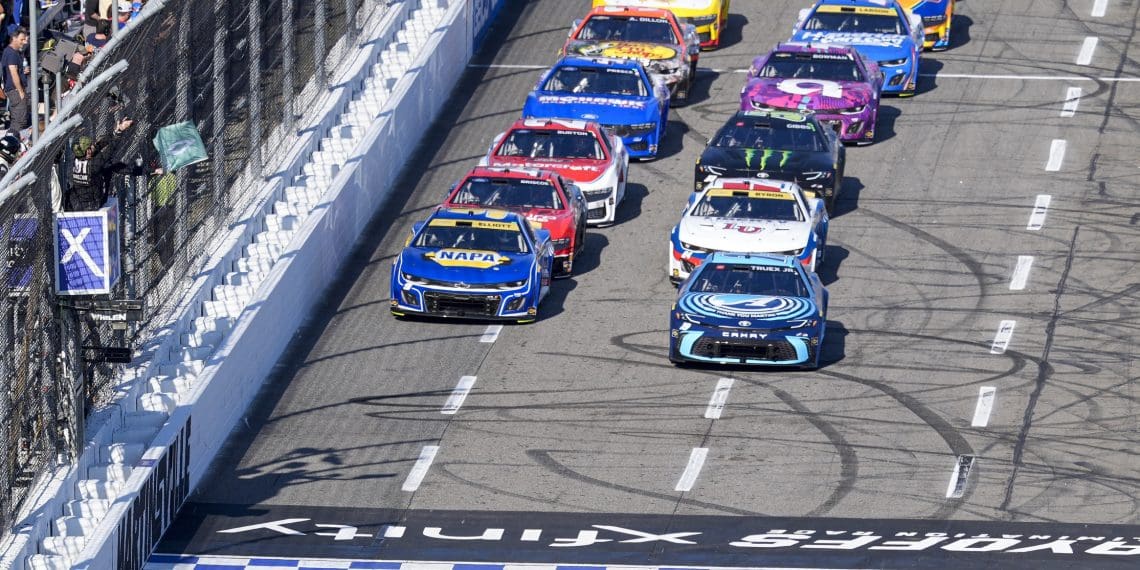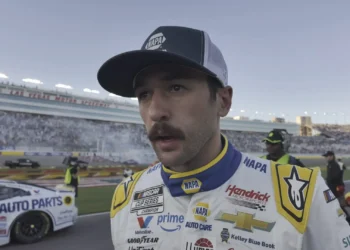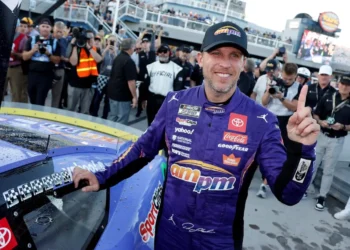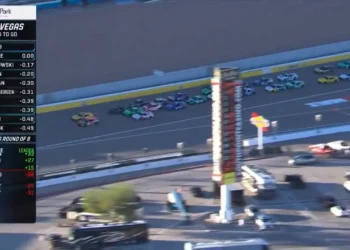NASCAR fans, brace yourselves: a conversation that’s been simmering for years has bubbled to the surface once again. Former driver Rick Mast, a nine-time Xfinity Series race winner, has candidly addressed what he sees as NASCAR’s diminishing star power. Appearing on Dale Earnhardt Jr.’s Dirty Mo Media YouTube channel, Mast offered a sobering take on the disconnect between today’s drivers and the fanbase, comparing it to the glory days of stock car racing in the 1990s.
Mast on the Loss of Fandom’s Connection
Mast believes the magic that once made NASCAR drivers larger-than-life heroes has faded. While he’s quick to acknowledge the talent and personality of today’s racers, he asserts that something fundamental has been lost in the relationship between drivers and fans.
“We’ve also lost some of the appeal of the drivers being heroes to the fans… I’m not taking away anything from these guys now; they’re very talented, they’ve all got personalities,” said Mast.
The former racer pointed to the 1990s as an era when drivers like Dale Earnhardt Sr., Jeff Gordon, and Rusty Wallace weren’t just athletes—they were cultural icons. Fans idolized them in a way that today’s drivers don’t seem to command.
The Social Media Disconnect
Mast also highlighted how social media and the media landscape have shifted the dynamic between drivers and their followers. In his words, this transformation has created an emotional and cultural gap:
“There’s a disconnect somewhere between these drivers and the fans that we used to have in the ’90s. That connection is just not there, and I’m not sure in today’s media world, with social media and with everything that goes on—how do we do that?”
While platforms like Twitter and Instagram give fans unprecedented access to drivers, they also dilute the mystique that once made drivers feel untouchable and heroic.
Kenny Wallace on Dale Earnhardt’s Stardom
Adding fuel to the discussion, Kenny Wallace, another NASCAR veteran, reminisced about the unparalleled influence of Dale Earnhardt Sr. in the sport’s golden years.
“Dale Sr. was bigger than NASCAR. You know there’s that old saying, ‘You’re never bigger than the sport,’ but I’ll tell you right now, Dale Sr. could’ve gone on TV and told everyone to stay home, and they would’ve. He was that big.”
Wallace’s point underscores the undeniable charisma and sway Earnhardt held—not just over fans but over the entire NASCAR ecosystem. His larger-than-life persona was a cultural phenomenon, something current drivers struggle to replicate in today’s fragmented entertainment world.
Can NASCAR Recapture Its Star Power?
Both Mast and Wallace’s observations reflect a larger challenge for NASCAR: rebuilding the kind of driver-fan connection that propelled the sport into mainstream popularity. But is it even possible in today’s digital-first world?
For Mast, the path forward isn’t clear. However, some fans and analysts suggest that fostering organic rivalries, unique personalities, and compelling storylines could help reignite fan passion.
As NASCAR enters a new season, the question remains: Will the next generation of drivers step up to become the heroes fans so desperately crave? If not, the sport risks continuing to lose the emotional connection that once made it a dominant force in American culture.













